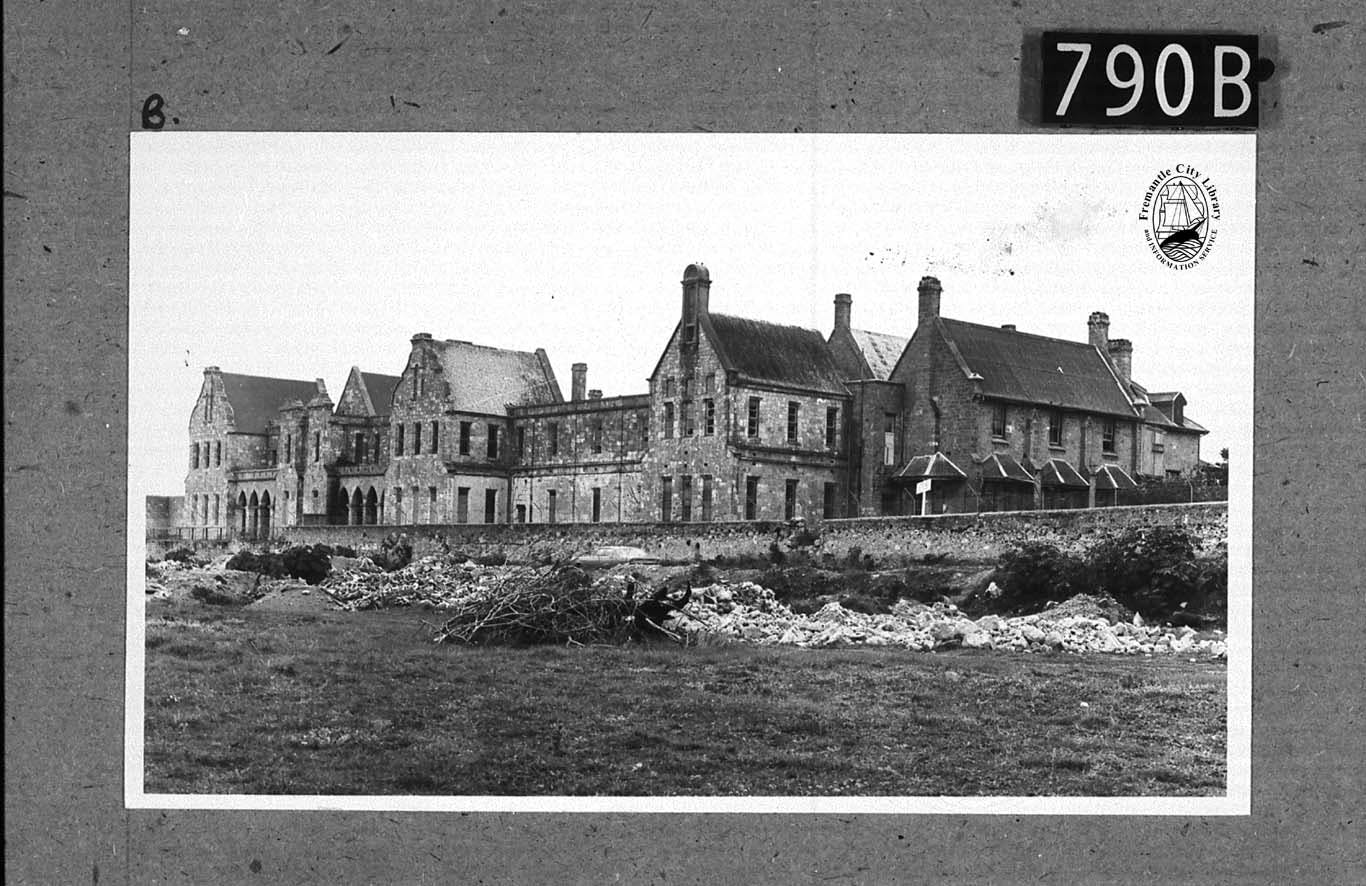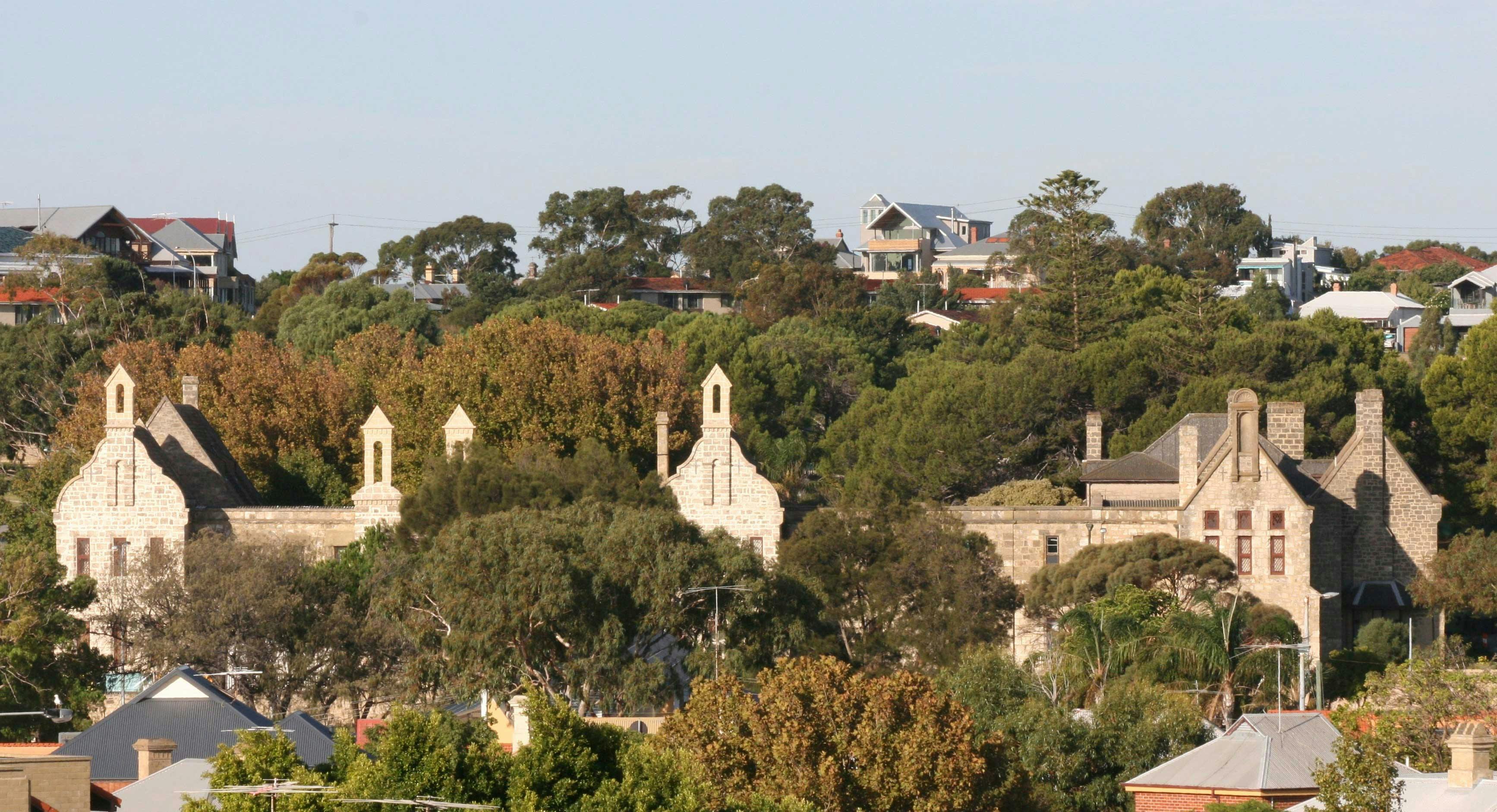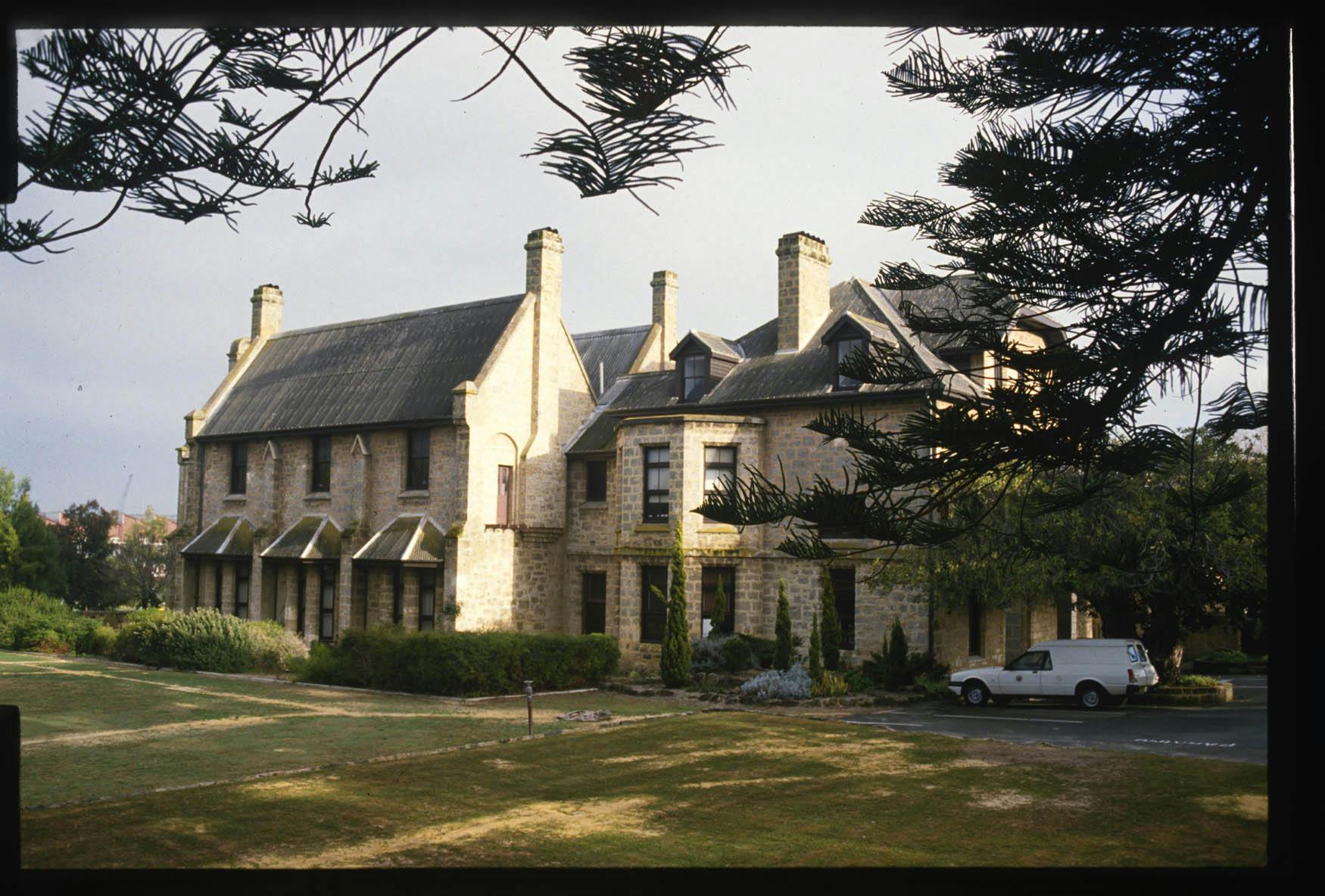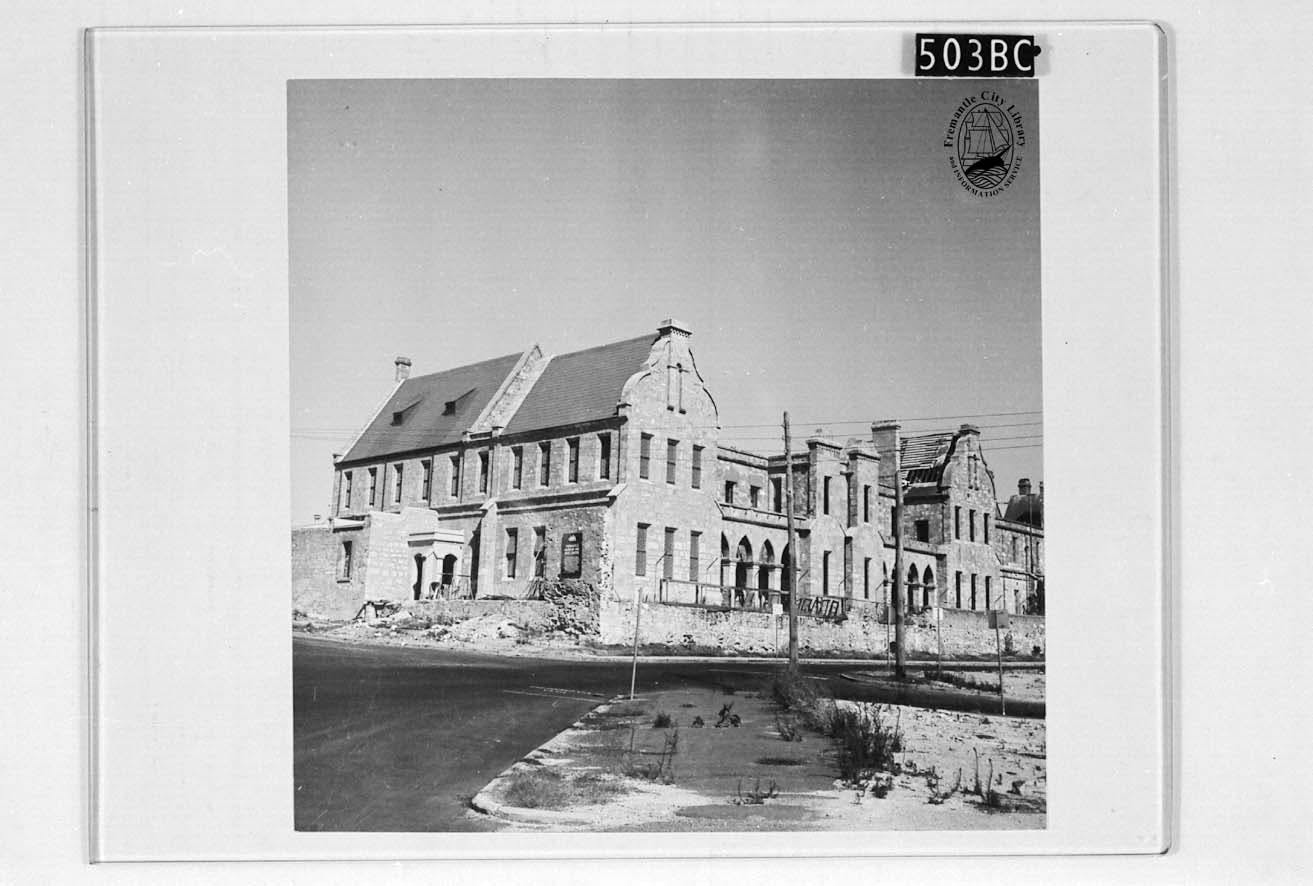Photo Gallery

View of the old Lunatic Asylum during conservation (between 1969-1970), built in stages between 1861 and 1894, during restoration for its use as the Arts Centre and Museum. Architect R. McKellar Campbell was responsible for the restoration work which commenced in 1969. The Museum section opened in 1970 and the Fremantle Arts Centre, the South wing of the original building, in October 1972.
The left hand side shows the ground floor corridor, the top is part of the front elevation (Parry Street) and the right hand side is the courtyard.
The Great Court - originally divided by a high stone wall to separate the male and female inmates of the Asylum, this area was landscaped in 1970 to create the current gardens.





